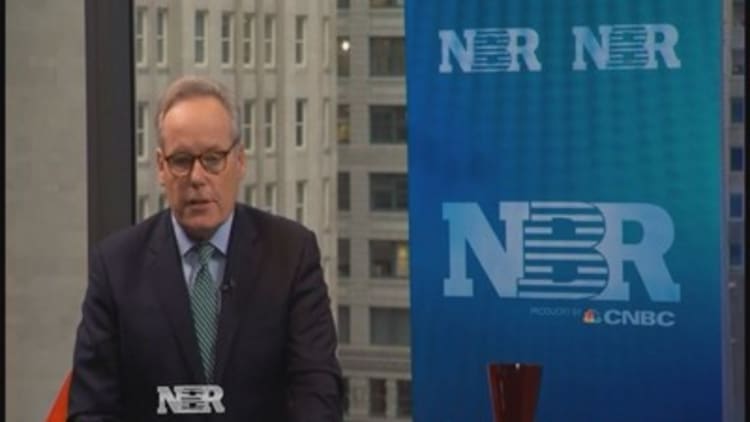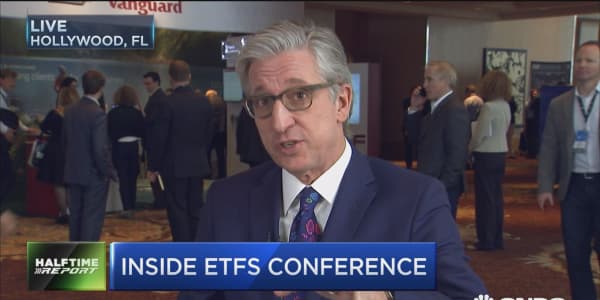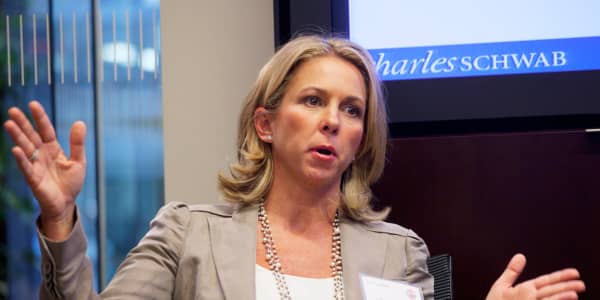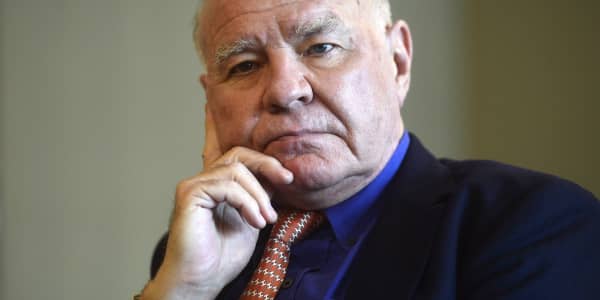Exchange-traded funds are on their way to $5 trillion in assets, a path that will travel around the globe as more nations dive into the increasingly popular investment vehicle, according to a study released Monday.
Asset managers responding to a PricewaterhouseCoopers analysis of the industry believe that lofty mark will be attained as soon as 2020. Even as growth begins to taper in the U.S., experts see untapped reservoirs around the world.
"The ETF market is a fast-growing business with many appealing qualities. It is also undergoing some transformative changes that will make it much bigger and more competitive within a few years," the study's authors said. "The highest rates of growth are likely to be found in less mature markets. Asian investors have had access to ETFs for some time, but are only now adopting them in greater numbers."
GIven the rate of recent growth, the estimate from survey respondents doesn't seem overly ambitious.
The $2 trillion industry has exploded, adding about $380 billion over the past two years, according to ETF.com, which is hosting the InsideETFs conference in Hollywood, Florida, an event expected to draw 1,900 people.
"We're assuming the construct doesn't change," Nigel Bradshaw, a partner at PwC, and member of the firm's editorial board, told CNBC.com. "We're being very conservative."

ETFs mostly track indexes and are constructed in much the same way as mutual funds, but they can be traded like stocks and have lower fees and tax advantages. Including global funds, ETFs manage about $2.6 trillion, still much smaller than their mutual fund brethren but are growing at a faster place. Mutual funds hold about $13.3 trillion in assets, excluding money market funds, according to the Investment Company Institute.
Read MoreThe $2 tril ETF market boom
PwC sees a number of areas that will spark growth, with the biggest points of emphasis coming from investors outside the U.S. and in alternative products such as actively managed funds and nontransparent vehicles, the latter two to compete directly against mutual funds.
"Investors in Latin America, the Middle East and Africa have been introduced to ETFs even more recently," the study said. "The fact that they currently account for only 2 percent of global ETF assets only serves to illustrate the potential for growth in these markets as investors familiarize themselves with the benefits of ETFs."
Asia also is considered a major growth area as investors there get more acclimated to ETF advantages.
Read More5 ETF myths that keep investors away
"There is a long runway for opportunities," said Bill Donahue, managing director and ETF practice leader at PwC.
Regulations also are getting friendlier; Bradshaw pointed out that ETFs won a big victory in the U.K. with laws essentially outlawing the high-fee vehicles popular with asset managers there.
He also said the introduction of nontransparent ETFs—actively managed funds that don't have to list their holdings—is "a potential huge game-changer." (They're not actually allowed to be called ETFs, but rather exchange-traded managed funds, or ETMFs.)
Read MoreIt's a good time to be an ETF badboy
More broadly, the report expects to see a heightened level of competition, with new firms expected to jump into the ETF space as expansion continues. As things stand, three companies—BlackRock, Vanguard and SSgA (State Street)—control more than three-quarters of the ETF market, with $1.6 trillion under management, according to the most recent league tables from ETF.com,
PwC expects the asset management industry itself to hit $100 trillion by 2020,
"The real big push (in ETFs) will be on the active side," said Kevin Kelly, a conference attendee and chief investment officer at Recon Capital Partners, which itself is introducing some new products into the ETF space. "Investors are shifting capital to lower-expense vehicles to get the same absolute return."





